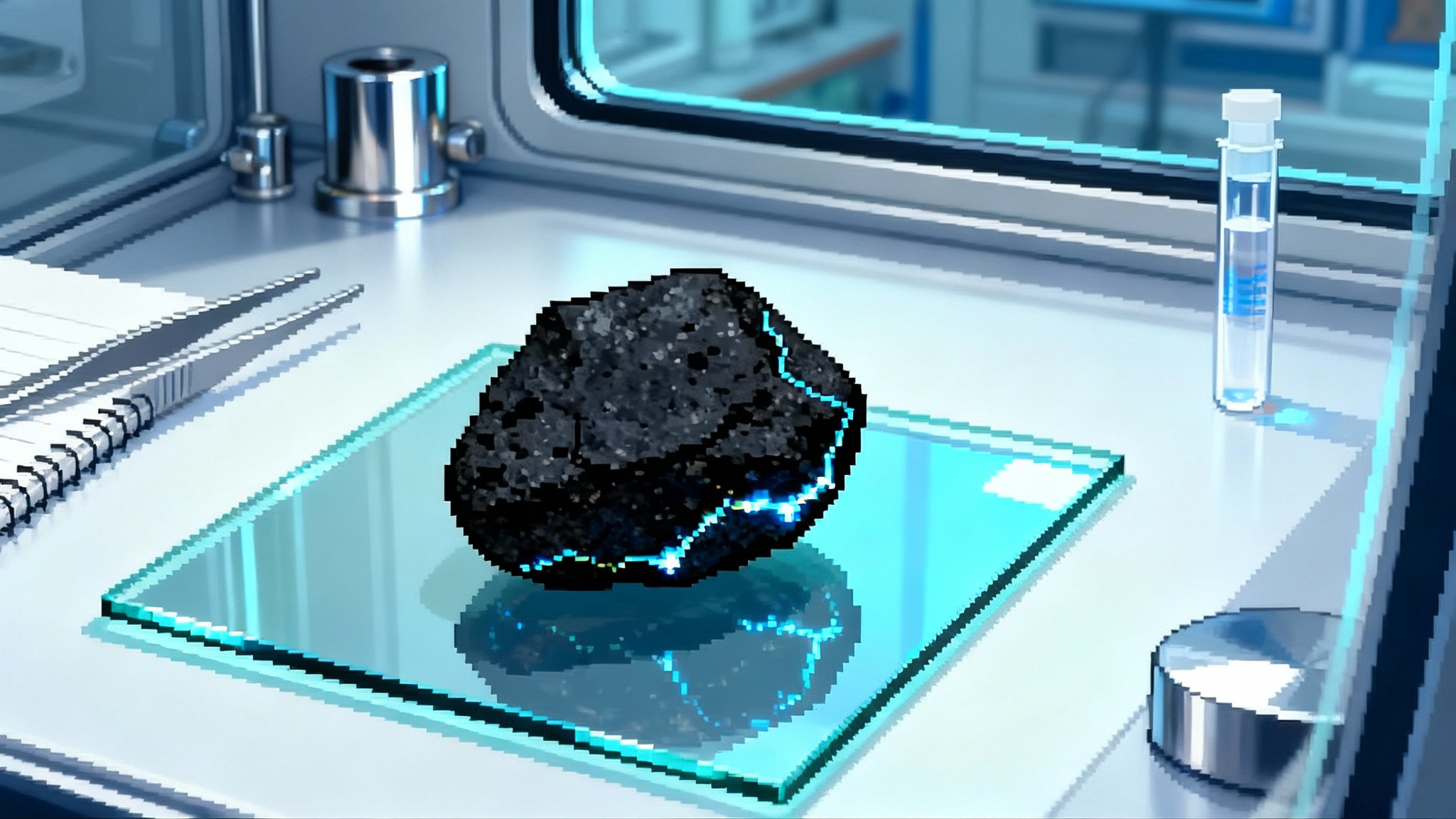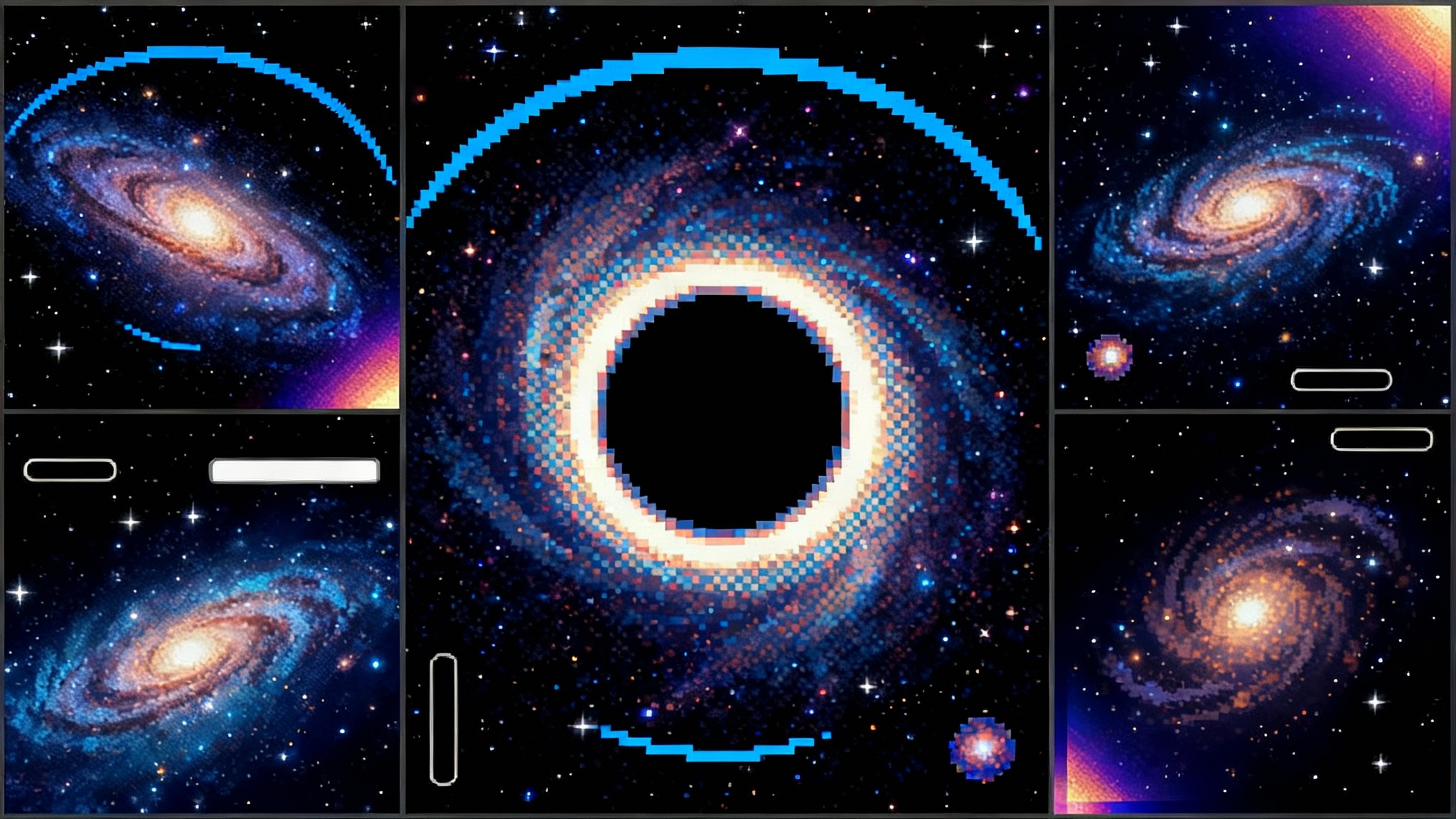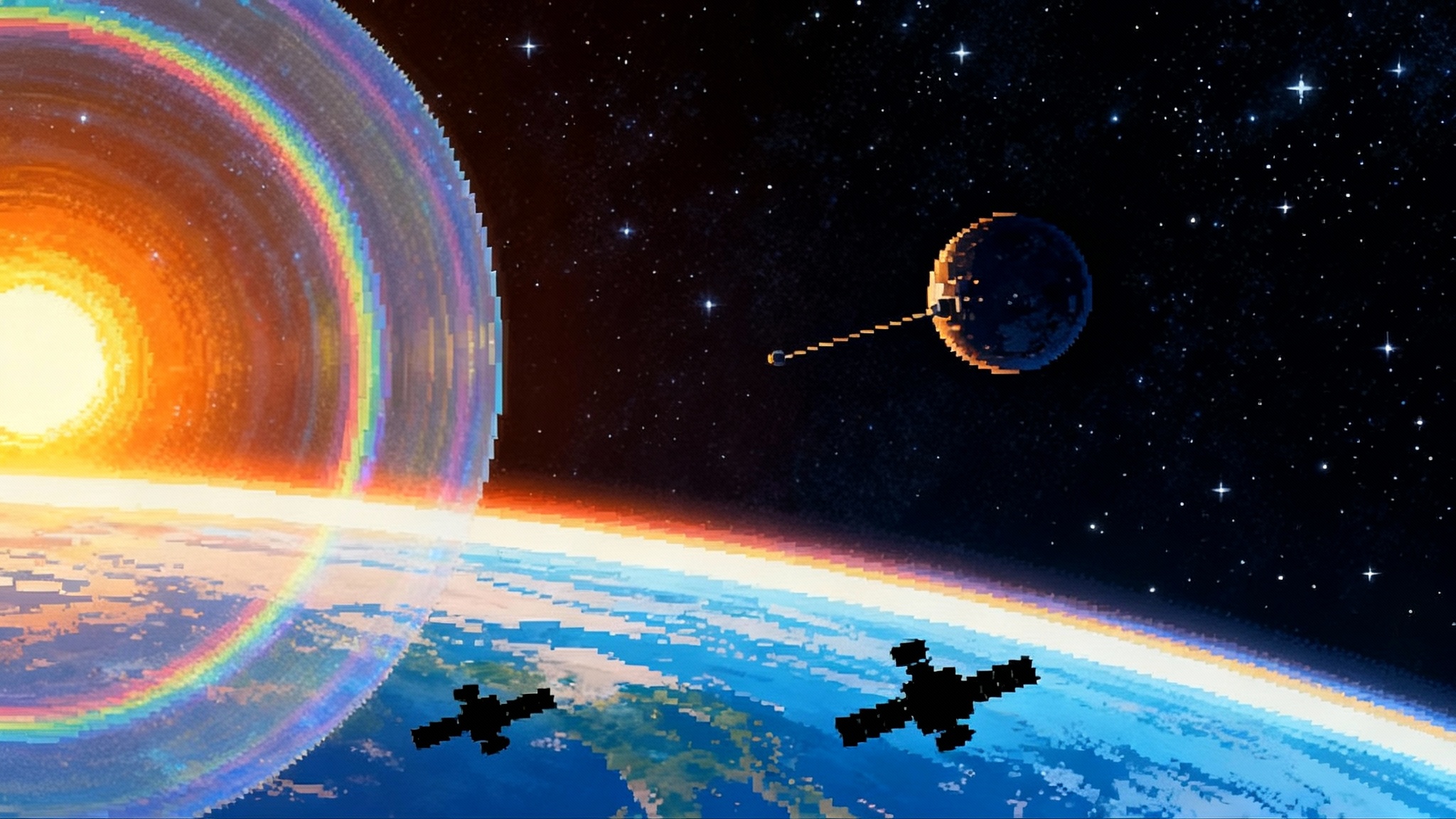Proba-3 Switches On Artificial Solar Eclipses in Orbit
Two small ESA spacecraft are now creating hours-long artificial solar eclipses in orbit, opening the inner corona to routine study and promising sharper, earlier space-weather forecasts for operators on Earth.

The news: eclipses on command
In 2025, the European Space Agency’s Proba-3 pair did what eclipse chasers can only dream about. Two toaster-sized spacecraft separated by roughly 150 meters locked themselves into a perfectly aligned dance and kept it steady for hours, turning day into artificial night for the telescope on the trailing craft. In technical dry speak, Proba-3 achieved and sustained millimetre-precision autonomous formation flying. In plain language, Europe just switched on solar eclipses at will. The milestone is documented by the agency’s update confirming that the twin spacecraft achieved millimetre-precision formation flying.
Proba-3 is not one satellite but two. The Occulter Spacecraft carries a 1.4 meter disk that blocks the blinding photosphere of the Sun. The Coronagraph Spacecraft trails behind with the ASPIICS telescope, which records the faint inner corona that natural eclipses reveal for only minutes at a time. Orbiting Earth every 19.7 hours on a path that stretches from about 600 kilometers at perigee to roughly 60,500 kilometers at apogee, the duo forms up near apogee where gravitational tugs are small and propellant use is frugal. Then the eclipse begins.
Why this is a big deal right now
Space weather is not a niche topic for heliophysicists. It moves markets, diverts flights, and can trip power grids. The inner solar corona is where coronal mass ejections are born, where magnetic field lines snap and reconnect, and where the earliest signals of a dangerous eruption first take shape. Until now, our best continuous coronagraphs were monolithic instruments with small internal masks. They could not both suppress glare and get very close to the Sun’s apparent edge. Natural eclipses solved that glare problem but only for a few fleeting minutes and at most a handful of times each year somewhere on Earth.
Proba-3 changes the geometry. Put the occulting disk on one satellite and the camera on the other, separate them by the length of a city block, and the system behaves like a giant external coronagraph. That longer baseline lowers the inner field of view to about 1.1 solar radii, right into the zone where eruptions gain speed. It also keeps the view steady for up to six hours per orbit. Over weeks, the result is not snapshots but a movie reel of the corona’s engine room. For a broader context on how inner heliosphere monitoring feeds forecasting, see our explainer on the IMAP at L1 mission.
This is the difference between peeking through the keyhole and opening the door. Models such as WSA-Enlil and EUHFORIA ingest boundary conditions that describe the flow of plasma streaming off the Sun. Better observations of the inner corona, at higher cadence and for longer durations, tighten those boundary conditions. When the models are fed cleaner inputs, their forecasts of when and how fast a burst of particles will blast past the planets improve. That translates into earlier and more precise alerts for satellite operators, airlines planning polar routes, and grid managers adjusting reactive power reserves. These advances also dovetail with the data pipelines powering a real-time astronomy revolution.
How Proba-3 pulls off a man-made eclipse
Think of two self-driving cars maintaining formation on a mountain road at night, one projecting a perfectly circular shadow that must land on the other’s windshield without drifting a centimeter. Now move this act to 60,000 kilometers above Earth and replace headlights with the Sun. That is the Proba-3 challenge.
The Occulter Spacecraft carries the disk with a serrated edge profile designed to trim diffracted light. It hosts laser and visual metrology heads that continuously sense the relative position of the other spacecraft. The Coronagraph Spacecraft carries ASPIICS and a set of targets and sensors, including a Narrow Angle Camera to detect the occulter and a Shadow Positioning Sensor that can feel where the edge of the shadow falls on the telescope plane. The formation begins when the pair approaches apogee. Radio frequency ranging, laser measurements, star trackers, and the camera work together to bring the two vehicles into the so-called formation envelope. Once acquired, micro-thrusting corrects drifts in millimeters rather than meters. The guidance loop runs on board, which matters when a radio round trip to Earth would be too slow to keep the shadow perfectly centered.
Safety is baked into the choreography. Near perigee, atmospheric drag and gravity gradients rise. The pair breaks formation well before that point and follows a planned relative trajectory that eliminates collision risk. After perigee, the pair climbs again, reacquires, and repeats. Each cycle is an opportunity to refine the navigation filters, recalibrate sensors, and stretch the duration of the eclipse sequence.
The hardware is European to the core. Sener Aerospace leads the industrial team. Airbus Defence and Space in Spain designed the satellite platforms. Redwire in Belgium handled key integration tasks. GMV in Spain developed the formation-flying brains. The prime instrument, ASPIICS, was led by the Centre Spatial de Liège in Belgium. Ground operations run from the European Space Security and Education Centre in Redu, Belgium. The ride to orbit in December 2024 came on India’s Polar Satellite Launch Vehicle, a pragmatic choice that bought schedule certainty when Europe’s heavy-lift bottleneck persisted. This follows a string of ambitious European science missions, including Euclid’s first data shockwave.
The immediate upgrade to space-weather forecasting
Proba-3 does not replace space-weather assets, it plugs a critical gap. Spacecraft like the Solar Dynamics Observatory image the solar disk in extreme ultraviolet, while coronagraphs like LASCO on SOHO and Metis on Solar Orbiter capture the outer corona. Between those regimes lies the stubborn inner zone that has been both bright and elusive. By producing regular multi-hour eclipses in that inner zone, Proba-3 will deliver the missing boundary layer for operational models.
Here is what changes in practice:
- Earlier eruption detection. Coronal mass ejections develop a recognizable front and cavity. Continuous views close to the limb make those shapes visible sooner, which adds valuable lead time before the disturbance sweeps past L1 monitors like DSCOVR.
- Better speed and direction estimates. Accurate triangulation of halo and partial-halo events requires clean outlines in the first several solar radii. That reduces the cone of uncertainty around arrival time at Earth.
- Sharper risk stratification. Operators can block out false alarms by distinguishing narrow, slow streamers from broad, fast ejecta. The result is fewer unnecessary satellite safe-modes and less over-conservative airspace rerouting.
- Real validation data. Numerical models drift when they are not checked. High cadence observations of the streamer belt and helmet cusp give modelers a reality check on magnetic topology and heating assumptions.
For agencies, the to-do list is clear. NOAA’s Space Weather Prediction Center and ESA’s Space Weather Service Network can trial new pipelines that push Proba-3 inner-corona products into forecast desks within minutes. That requires standardized metadata, agreed-upon error bars, and near real time processing nodes that sit close to the mission’s ground stations. With those pieces in place, the gains from Proba-3 will show up not just in papers but in operations rooms.
From two craft to mega-telescopes
Proba-3 is also a pathfinder for something even more daring. If two small spacecraft can act like a single 150 meter instrument, then in principle five or ten spacecraft can act like a far larger distributed observatory. Formation flying at optical wavelengths is the bottleneck for mega-telescopes that will never fit into a fairing.
One branch of this future is starshade-class exoplanet imaging. A starshade is a free-flying occulter that parks tens of thousands of kilometers away from a space telescope and blocks just the starlight, letting the planet’s feeble glow register on the sensor. The physics of diffraction, alignment, and station-keeping are cousins to Proba-3. Every hour the European pair flies in perfect alignment is a rehearsal for the day a telescope targets a Sun-like star and tries to pick out the pale blue dot that circles it. The tolerances change, the distances grow, yet the control logic, sensor fusion, and safety playbook carry over.
There is also a branch for long-baseline interferometry. Imagine two or more telescopes locked into a virtual optical bench hundreds of meters long, or kilometers long, tuned to snap images of black hole event horizons or to measure faint stellar wobble with exquisite precision. The core competency is the same. Multiple vehicles must acquire, hold, and reconfigure their geometry with metrology that treats a millimeter as if it were a meter.
What the first artificial eclipses have already shown
By mid-2025 the mission team reported sequences of sustained artificial eclipses, with the pair repeating alignments over successive apogees and gradually extending the duration. An early count recorded several eclipses per week and hours of totality in a single pass. Coverage at that cadence adds up fast over a two year mission, and it is the sustained observing time that pushes new physics to the surface. For readers who want a news snapshot of the moment Proba-3 proved the concept at operational scale, see coverage of the first artificial eclipses.
Even in the early sequences, three themes stood out:
- The inner corona is dynamic on minute scales. Streamers sway, narrow jets flash and fade, and the base of helmet structures writhes like a slow aurora. Short exposures miss those waves. Hour-long windows catch them in the act.
- Edge control is everything. The shape and stability of the occulter’s rim decide how much stray light creeps into the instrument. Proba-3’s sculpted edge proves that the stray light budget can be disciplined in flight, not just on paper.
- Closed-loop sensing works. The Shadow Positioning Sensor provided fine corrections once the shadow was on target, while the camera and laser provided coarser inputs at longer ranges. This handoff between sensors is the template for future distributed telescopes that need coarse acquisition followed by nanometer-grade hold.
Spin-offs you can use this year
The technologies behind Proba-3 have immediate value beyond solar science.
- In-orbit assembly. Precision formation flying enables unconnected modules to hold rigid relative geometries, which lowers the bar for mechanical docking. A large antenna made from several free flyers can be held in shape long enough to bond, weld, or clamp segments together. The same sensing stack that keeps the eclipse aligned can keep trusses aligned while robotic arms make the join.
- Satellite inspection. High-resolution visual metrology paired with safe relative trajectories is exactly what a smart inspector needs to diagnose thermal blankets, antennas, and radiators without contact. Operators can adopt Proba-3’s playbook for approach cones, keep-out zones, and autonomous retreat behaviors.
- Debris removal. Chaser vehicles must approach tumbling targets along safe corridors, match rates, and stabilize the system while a capture device engages. Sensor fusion that mixes radio ranging, laser heads, and visual navigation is far more robust than relying on one sensor alone. Companies like ClearSpace and Astroscale can port parts of this stack to raise capture reliability and reduce propellant use.
- Rendezvous and servicing. Fine control at centimeter and millimeter scales makes fluid transfer lines and umbilical hookups less risky. The lesson from Proba-3 is to put the autonomy on board, close the loop locally, and keep the ground in the supervisory lane.
If you are building these systems today, three practical steps will pay off. First, standardize visual targets and retroreflectors on new satellites so inspectors and servicers have something to lock onto. Second, require a provable break-before-make retreat plan and relative orbit design in proximity operations reviews. Third, budget compute and power on board to keep the guidance loop closed without waiting for ground commands.
What comes next on the mission timeline
The mission team’s 2025 focus is to close the loop between the Shadow Positioning Sensor and the formation controller so that the sensor not only guides calibration but also drives real time corrections during long eclipses. Expect routine eclipse campaigns to settle at up to six hours per 19.7 hour orbit, typically a couple per week, with stretches of continuous operations when the geometry and ground support line up.
On the science side, look for synoptic inner-corona maps that connect with Solar Orbiter and ground magnetographs. The first data releases should prioritize cadence and calibration, then add polarimetry and multi-band products that help disentangle density from magnetic structure. The operations team also plans to demonstrate retargeting and resizing maneuvers, changing the alignment and distance to validate distributed-telescope recipes. A rendezvous experiment late in the prime phase will stress the navigation stack in a non-solar context, which feeds directly into satellite servicing tactics.
At the mission level, Proba-3 will accumulate thousands of hours of formation time, a figure that matters as much as the high-water mark of any single session. End-of-life planning will emphasize clean passivation and safe disposal from the highly elliptical orbit. The value of the mission will outlive the spacecraft. The procedures, checklists, and flight software patterns are what future exoplanet imagers and multi-craft observatories will inherit.
The bottom line
Proba-3 did not just take a pretty picture. It moved a capability from whiteboard to working practice. Artificial eclipses on demand give forecast centers a new stream of inner-corona data, and they give engineers a finished blueprint for formation flying that holds at scale and in the real world. When you can place a shadow the width of a door across a gap the length of a football field, and keep it there while everything in space tries to push you off target, you are ready to build telescopes and missions that used to be science fiction. The eclipse is only the beginning.








